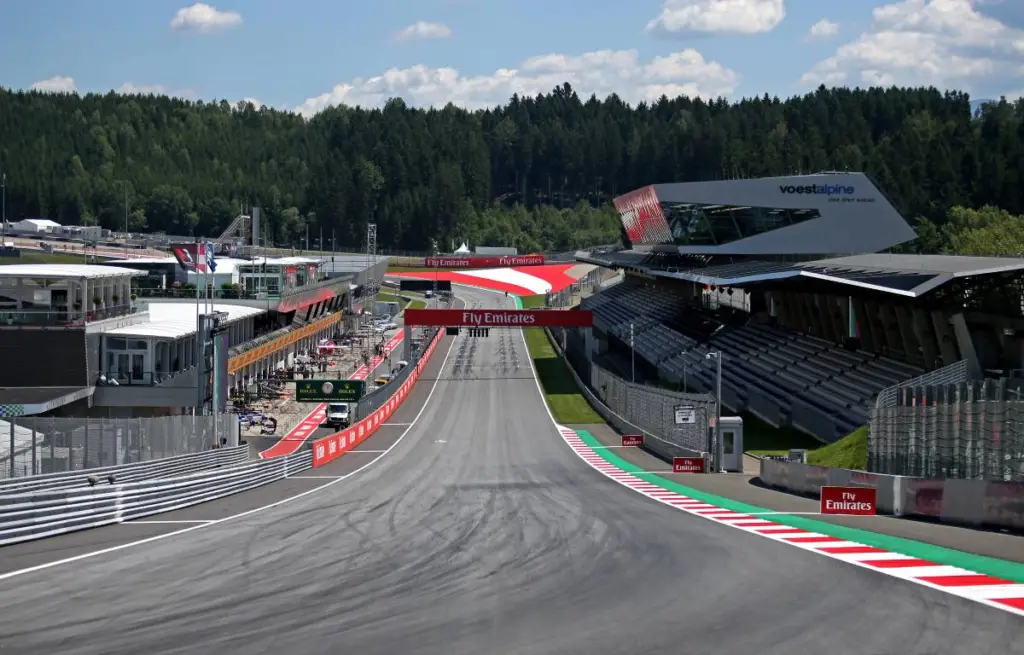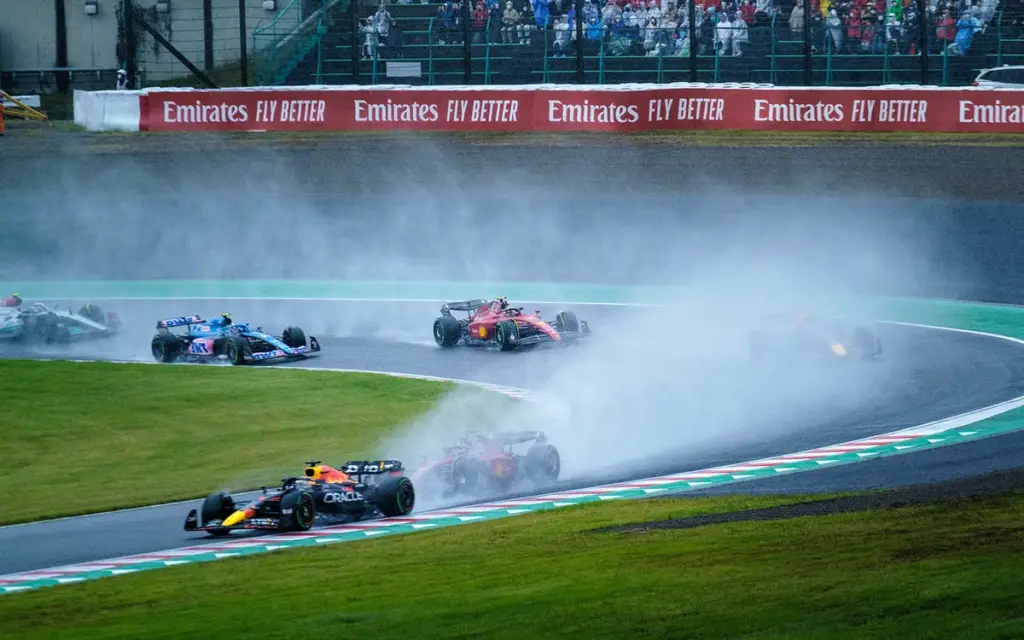The Austrian GP Circuit, set against the mesmerizing backdrop of the Styrian mountains, has always been a crown jewel in the Formula 1 calendar. The Red Bull Ring, which plays host to this iconic race, beautifully juxtaposes the serenity of its alpine surroundings with the roaring intensity of the world’s fastest machines.
The undulating circuit may seem deceptively simple with its limited number of turns. But it demands a unique blend of sheer speed, precision, and strategy from every driver brave enough to take it on. Each corner must be mastered to unlocking a fast lap.
Dive with us into the intricacies of this storied track, as we embark on a corner-by-corner journey, unraveling the secrets to conquering the Austrian Grand Prix circuit hosted at the Red Bull Ring
F1worldwide.com Recommends
- Austrian Grand Prix: The Ultimate Guide for F1 Fans
- Qatar GP: Why You Should Visit This Amazing F1 Destination
- Yuki Tsunoda: The Japanese F1 Driver Making Waves
- Yuki Tsunoda as a Child
- Everything you need to know about Max Verstappen
- After Posting REVEALING Pictures Kelly Piquet SAVAGED
Overall Characteristics of the Austrian Grand Prix
The general statistics of the Red Bull ring are listed below.
| Facts | Stat |
|---|---|
| Length of track | 4.318 km |
| Number of corners | 10 |
| Elevation | 677 m above sea level |
| Change in elevation | 65 m |
| Maximum incline | 12 % |
| Maximum decline | 9,3 % |
| Track width | 12-13 m |
| Number of laps | 71 |
| Total distance | 306.58 km |
| Lap record | 1:05,619 Carlos Sainz (2020) |
| First Grand Prix | 1970 |
The Red Bull Ring is characterized by its high-speed nature complemented by undulating terrains.
In its current form the track is 4.3km long and contains 10 turns. The races last for 71 laps.
With just ten turns, it’s one of the shorter tracks on the calendar. The track surface is relatively smooth, causing moderate tire degradation. This means that while tire strategy is crucial, it’s less frenetic compared to tracks with high degradation.
The Straight-line Speeds at the Austrian GP Circuit

- Start/Finish Straight: Cars accelerate out of the last corner and blast down the straight, reaching over 320km/h before the first corner.
- Between Turns 1 & 2: After navigating the first turn, speeds of about 300km/h are achieved.
- Between Turns 2 & 3: One of the most thrilling parts, cars reach up to 310km/h.
Corner-by-Corner Analysis of the Austrian GP Circuit
Austrian GP Circuit – Turn 1 (Niki Lauda)
The first turn (Niki Lauda) is at the end of the main straight
- Entry Speed: Around 80km/h.
- Braking: Heavy deceleration from 320km/h, a dramatic drop requiring hard braking.
- Line: Late apex is ideal. This allows the driver to be on the power early, using the whole track on exit and propelling towards Turn 2.
- Exit Speed: Approximately 140km/h.
- G-force: Up to -3.5G under braking.
Austrian GP Circuit – Turn 2 (Munzer)
Turn 2 is midway through the second straight
- Entry Speed: Around 100km/h.
- Braking: Moderate braking is applied, shaving off 200km/h.
- Line: A classic racing line – outside on entry, clip the apex, and use all of the exit.
- Exit Speed: Around 150km/h.
- G-force: -3G under braking.
Austrian GP Circuit – Turn 3
Turn 3 is a sharp right-handed bend at the end of the 2nd straight.

- Entry Speed: About 90km/h.
- Braking: Another heavy braking zone from 310km/h.
- Line: Late-apex again to maximize speed down the following straight.
- Exit Speed: Roughly 170km/h.
- G-force: Approx. -3.3G.
Austrian GP Circuit – Turn 4 (Rauch)
Turn 4 is another sharp right handed turn.
- Entry Speed: Around 130km/h.
- Braking: Moderate braking after the high-speed approach, shedding off about 180km/h.
- Line: Hug the inside and allow the car to drift out slightly on the exit, preparing for the short burst to Turn 5.
- Exit Speed: Close to 160km/h.
- G-force: Approximately -3.2G under braking.
Austrian GP Circuit – Turn 5
Turn 5 is a gentle right-handed turn.
- Entry Speed: Roughly 105km/h.
- Braking: Light braking, just easing off the throttle more than a hard brake.
- Line: It’s crucial to clip the apex and use the width of the track on exit, maximizing speed for the approach to Turn 6.
- Exit Speed: Around 140km/h.
- G-force: A gentler -2.5G due to lighter braking.
Austrian GP Circuit – Turn 6
Turn 6 is a sweeping turn to the left.
- Entry Speed: About 100km/h.
- Braking: Mild deceleration required, slowing from 200km/h.
- Line: This corner is all about a smooth line, entering from the outside, clipping the apex, and smoothly transitioning to the next.
- Exit Speed: Roughly 130km/h.
- G-force: Around -2.7G.
Austrian Grand Prix – Turn 7 (Graz)
Turn 7 is another sweeping turn to the left.
- Entry Speed: 90km/h.
- Braking: Another light braking zone, decreasing speed from about 160km/h.
- Line: A tighter apex with a wide exit to carry momentum to the next section.
- Exit Speed: Approximately 120km/h.
- G-force: About -2.5G.
Austrian GP- Turn 8
Turn 8 is a gentle turn to the left.

- Entry Speed: 110km/h.
- Braking: Light braking while setting up the car for the penultimate turn.
- Line: Smooth entry and exit, ensuring a good position for the final corner.
- Exit Speed: Close to 140km/h.
- G-force: Around -2.6G.
Austrian GP Circuit – Turn 9 (Jochen Rindt)
The second last turn comes at the end of the 3rd straight.
- Entry Speed: Roughly 85km/h.
- Braking: Moderate braking, slowing the car from 230km/h.
- Line: It’s a late-apex corner to get the best drive out onto the main straight.
- Exit Speed: Approximately 130km/h.
- G-force: -3G due to the more aggressive braking.
Austrian Grand Prix – Turn 10
The last corner of the circuit leads into the long start finish straight.
- Entry Speed: About 75km/h.
- Braking: Heavy deceleration is needed here, shedding speed from 300km/h.
- Line: This is the final turn and crucial for a good lap time. The driver should clip the apex and use all the available track on exit.
- Exit Speed: Reaching nearly 140km/h, propelling onto the Start/Finish straight.
- G-force: A significant -3.5G.
The Physical Demand on the F1 Drivers
Driving an F1 car around the Red Bull Ring is a test of physical and mental strength. High-speed corners combined with the significant G-forces mean drivers’ neck muscles are under constant strain. With lateral forces reaching up to 4G in some corners, drivers need impeccable neck and core strength.
Conclusion
The Austrian Grand Prix at the Red Bull Ring offers a breathtaking spectacle of speed, bravery, and skill. While the high-speed straights allow drivers to push their machines to the edge, it’s the intricate corners that truly test their prowess. Every brake application, turn-in, and acceleration is a calculated move, a dance of precision and control.

